For a long time, mice from Zowie were considered the almost unalterable choice in the e-sports scene. However, BenQ's peripheral brand slept through the evolution towards wireless gaming mice – until now: Zowie is venturing into new territory with three wireless models from the EC series. ComputerBase was already able to get an impression.
Table of contents
- The EC series makes the wireless start
- Zowie relies on proven sensors with 1,000 Hz
- Via Enhanced Receiver for the most stable connection
- Basically a classic Zowie mouse
- Conclusion and outlook
For years, numerous PC gamers, especially e-sports enthusiasts and the enthusiastic mouse community, have been wondering when Zowie will finally introduce wireless mice. Hope was almost lost, but now the time has come: Almost quietly and secretly, Zowie published the first information about the EC1-CW, EC2-CW and EC3-CW during the CES. A video presents the three wireless mice and the associated Enhanced Receiver, a comparatively large wireless radio adapter with an integrated charging station.
Wireless mice of the FK, ZA and S series should do it also give. Zowie also wants to offer all its own gaming mice in a wireless version. However, there is no specific schedule for this.
The EC series makes the wireless start
ComputerBase already had the opportunity last fall to try out a technically almost final prototype of the EC1-CW. Zowie employees emphasized to the editors: Everyone at the manufacturer is aware that the manufacturer's first wireless mice have been a long time coming. So it was all the more important for Zowie to bring a product onto the market that not only meets the expectations in terms of performance, workmanship and longevity caused by the good reputation of Zowie mice, but also offers added value over previously available wireless mice. And the manufacturer does not see this added value in a particularly low weight, a higher USB query, a high-end sensor or even RGB lighting, but in a wireless connection that is as stable as possible. But first things first.
The EC series is Zowie's line of asymmetric shooter mice optimized for use with the right hand and palm grip. The manufacturer last updated the EC series in the summer of 2021, so that the current wired variants are called EC1-C, EC2-C and EC3-C. The wireless adaptations now presented are based on the same C series, so they are also lighter than the B series, have a flexibly wrapped cable and 24 grid points on the mouse wheel.
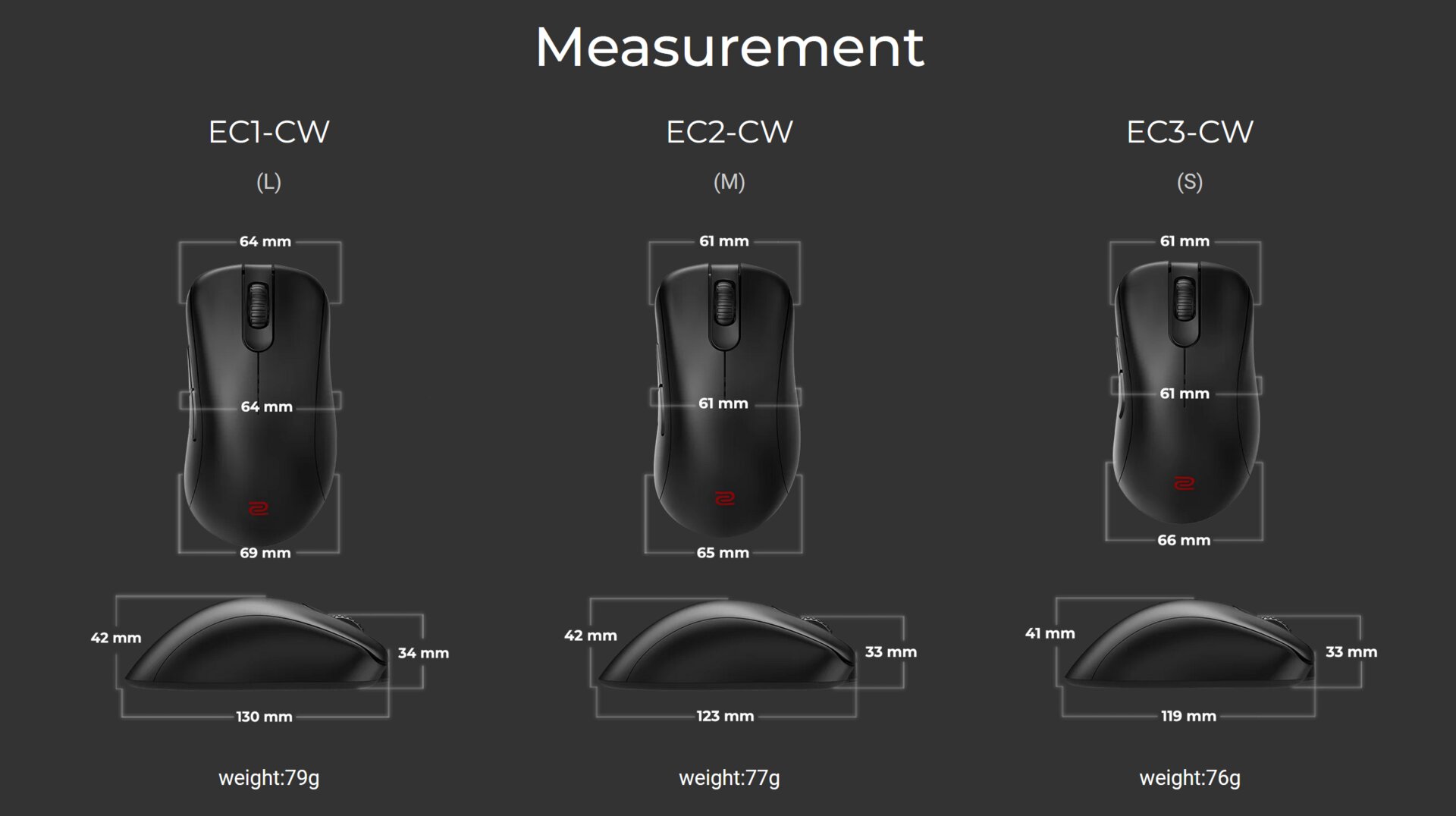
In terms of weight, the large EC1-CW is actually 1 g lighter than the EC1-C with a mass of 79 g, while the small EC3-CW is a little heavier at 76 g instead of 70 g. The three new Zowie mice are therefore no longer necessarily light compared to the competition available on the market in 2023, for example a DeathAdder V3 Pro (test) or a Pulsar Xlite V2 Wireless weighs only 64 g or 59 g. The Special Edition of the EC series, released in July 2022, already demonstrated that Zowie is swimming against the tide in this regard. ComputerBase has explained in a detailed report why the trend is towards lighter gaming mice.
- Simply explained: That's why gaming mice are weighing less and less
But back to the EC1 CW: In an interview with the editors, Zowie explained that the manufacturer was well aware of this development and had therefore at least made sure that the wireless mice were not (significantly) heavier than the models in the C series. However, a low mass is still not a priority for Zowie.
Zowie uses proven sensors with 1,000 Hz
And the same can be said for the built-in hardware of the EC1-CW, EC2-CW and EC3-CW. With a PixArt PAW-3370, the mice are definitely up to date, but not in the high-end range, which Razer currently leads with the PAW-3950 and to which, for example, a PAW-3399 or a PAW-3395 is to be counted. And Zowie doesn't say a word about the built-in mechanical switches. The battery life, on the other hand, amounts to around 70 hours with constant movement, with wireless connectivity being realized via 2.4 GHz radio with up to 1,000 Hz.
And the sampling rate is the next topic: Based on some leaked information and sightings of the wireless EC models at e-sports tournaments, the mouse community initially assumed that Zowie – such as Razer with the HyperPolling Wireless Dongle (test) – a wireless polling rate of up to 4,000 Hz. The reason for the assumption was that the wireless Zowie mice had always appeared in combination with an enhanced receiver that appeared to be almost gigantic. And why should such a large antenna be necessary if not for wireless sensors beyond 1,000 Hz?
The author also suspected this at the beginning of the hands-on event, but Zowie actually has a different explanation for the existence of the enhanced receiver. Because with the EC1-CW, EC2-CW and EC3-CW – as is still common with (wireless) gaming mice – a USB query rate of 1,000 Hz is the end. With a particularly powerful receiver, however, the manufacturer wants to ensure that the wireless connection between the wireless adapter and the mouse is so reliable that it is in no way inferior to a cable connection, even in an environment with very strong interference. Zowie is thinking of e-sports tournaments in large arenas or LAN parties.
Use enhanced receiver to the most stable connection
For this purpose, it is already helpful that the comparatively large enhanced receiver cannot simply be plugged into a free USB socket on the PC. On the one hand because the wireless adapter can or must be placed closer to the mouse, and on the other hand because USB 3.0 ports are a common source of interference for 2.4 GHz wireless connections. But in the end it is above all the size of the antennas that makes the difference in Zowie's solution.
The manufacturer demonstrated the technology with a provisional test setup: in a cool bag with a metal-coated insulating layer on the inside, there was a WLAN router that constantly transmitted data to a smartphone that was also in the bag. In between there was a conventional radio adapter – Zowie used the G Pro X Superlight (test), which is particularly popular in e-sports (test) – and the enhanced receiver. Outside the cool bag, around 30 cm in front of the opening, was the corresponding Logitech mouse and a prototype of the EC1-CW.
And indeed: While the sensors of the G Pro X Superlight suffer in this extreme scenario, which is reflected in a strongly delayed, jerky or sometimes completely missing mouse pointer movement when the mouse is constantly moving, the prototype of the EC1-CW and the Enhanced Receiver seem unimpressed. The editors also brought along a Viper V2 Pro with HyperPolling Wireless Dongle for comparison. And while operation at 1,000 Hz showed a similar picture as with the G Pro X Superlight, the mouse finally capitulated at 4,000 Hz: the mouse pointer did not move a millimeter despite constant mouse movement.
Now, however, it has to be noted about this experiment that it is just such an experiment and the significance for the practical use of the respective mice is limited. In dozens of tests of the corresponding input devices by the editors over several years, high-end models from Logitech and Razer in particular were able to impress with a very stable wireless connection, which was maintained even when the 2.4 GHz band was heavily used by several WLANs networks or other wireless input devices could maintain a stable polling rate of 1,000 Hz. There is no doubt that Zowie's approach is superior in theory – but whether there are advantages in practice in this regard compared to a G Pro X Superlight or comparable high-end mice cannot yet be judged.
A classic Zowie mouse at its core
In addition, the Enhanced Receiver fulfills another function. There are two metal contacts and an indentation in the front area of the underside of the EC1-CW, while the base plate of the Enhanced Receiver has the matching counterparts: the oversized radio adapter also serves as a docking station. Alternatively, the wireless Zowie mice can be charged via the USB-C slot on the front of the mouse. As usual for the manufacturer's models, the cable leaves the rodent at a slight angle in this case to minimize friction on the mouse pad.
-
 Zowie EC1-CW on Enhanced Receiver (Image: Zowie)
Zowie EC1-CW on Enhanced Receiver (Image: Zowie)
Image 1 of 8
 Zowie Enhanced Receiver (Image: Zowie)
Zowie Enhanced Receiver (Image: Zowie)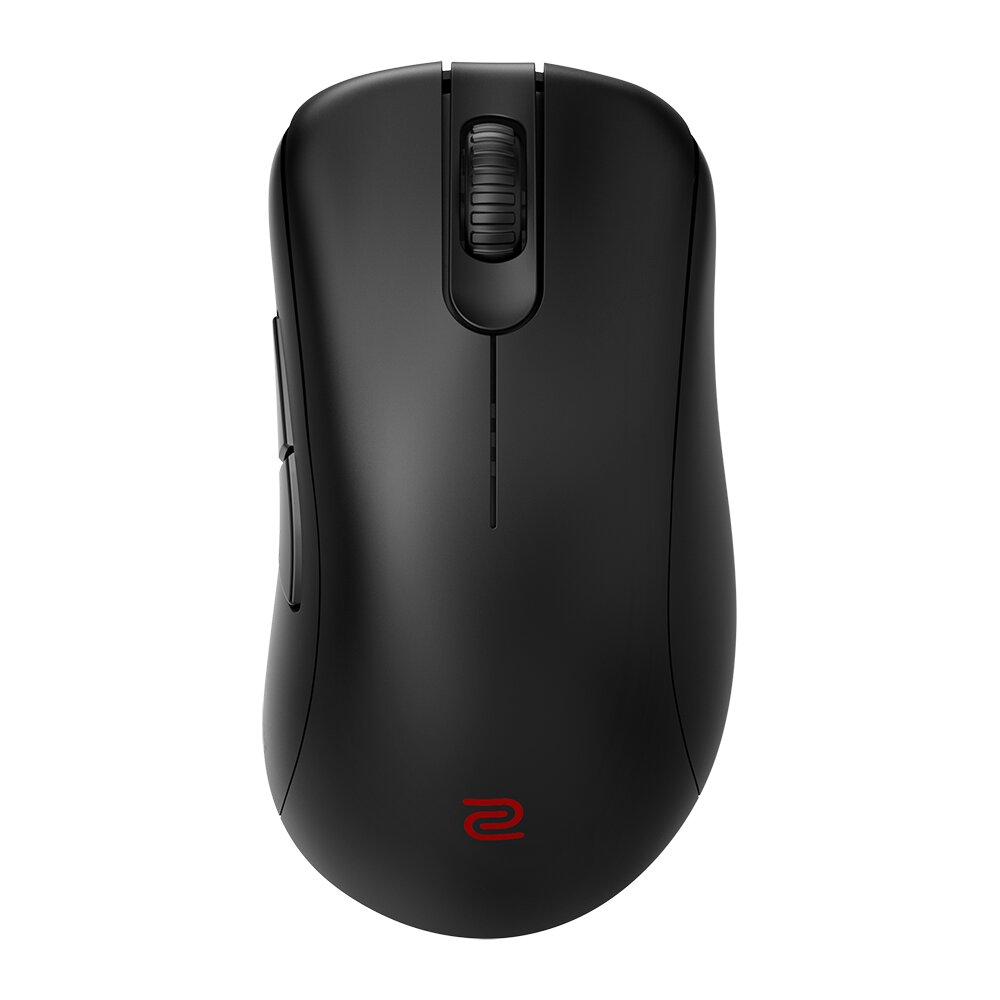 Zowie EC1-CW (Image: Zowie)
Zowie EC1-CW (Image: Zowie)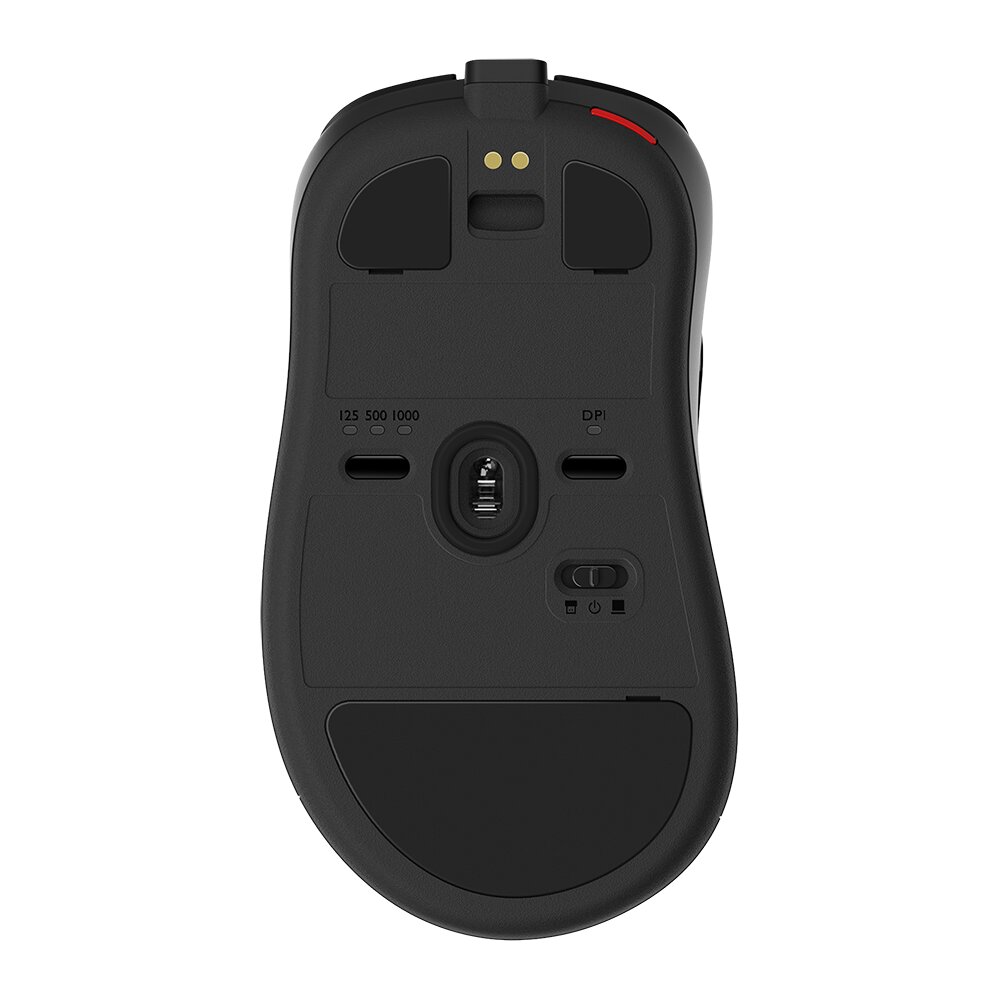 Zowie EC1-CW (Image: Zowie)
Zowie EC1-CW (Image: Zowie)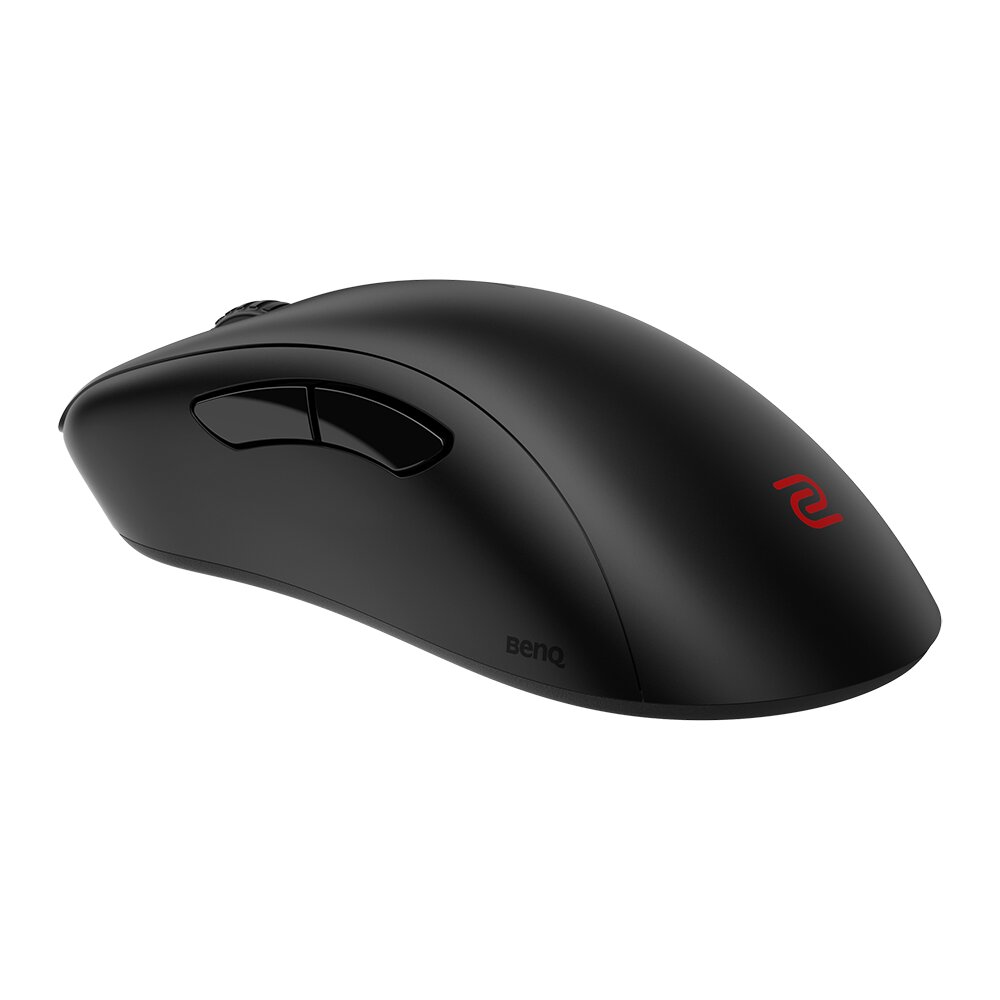 Zowie EC1-CW (Image: Zowie)
Zowie EC1-CW (Image: Zowie)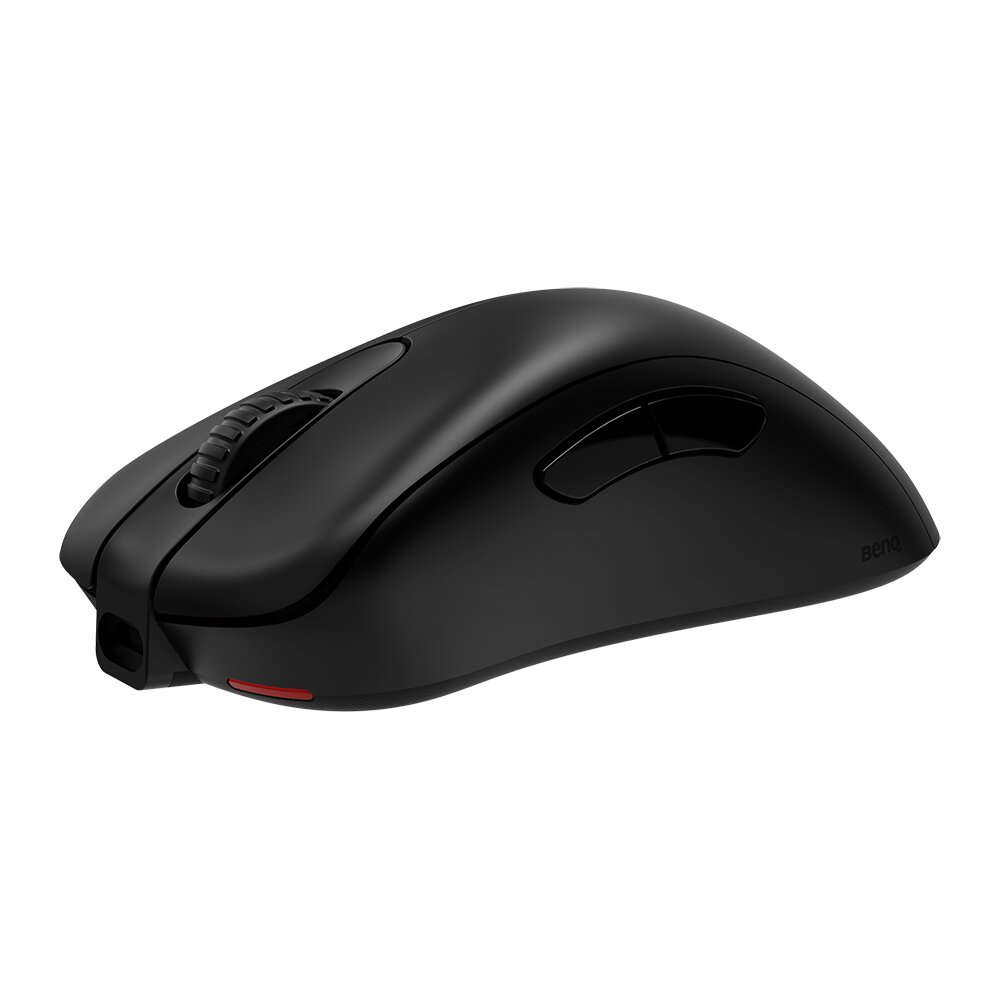 Zowie EC1-CW (Image: Zowie)
Zowie EC1-CW (Image: Zowie)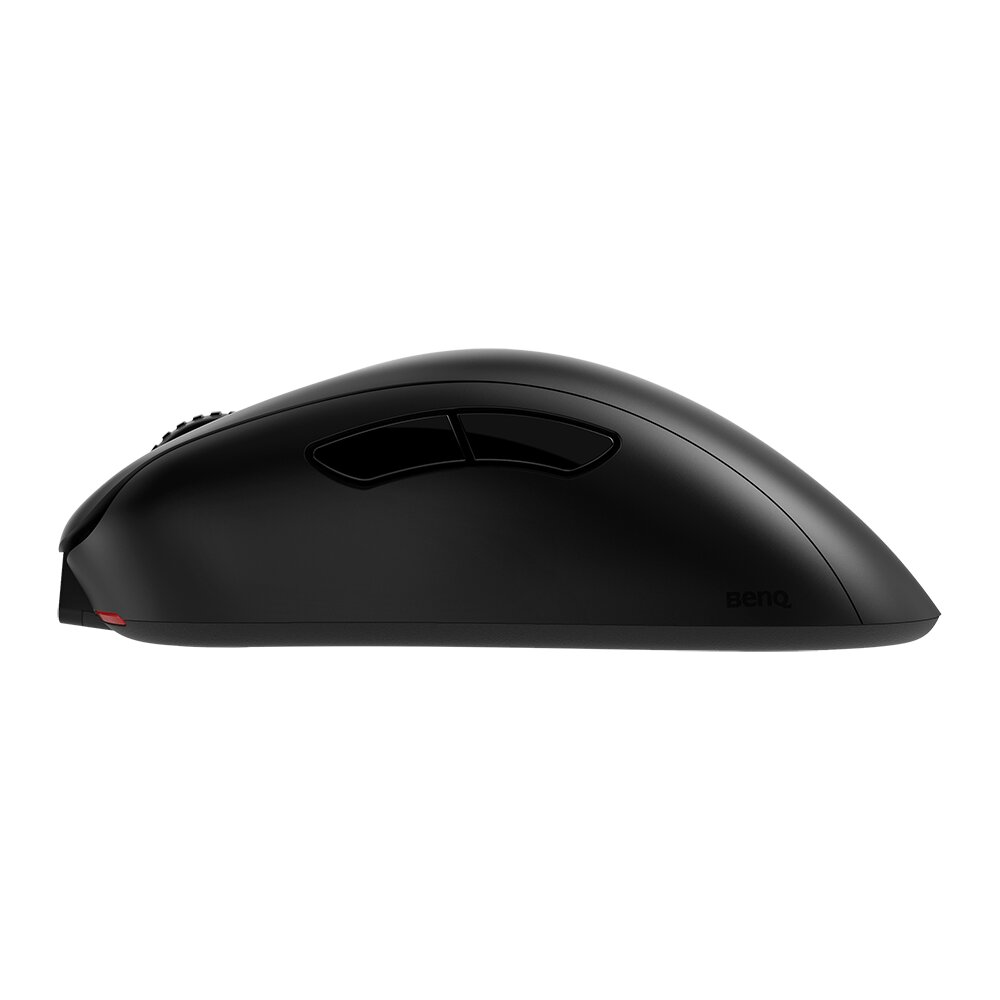 Zowie EC1-CW (Image: Zowie)
Zowie EC1-CW (Image: Zowie)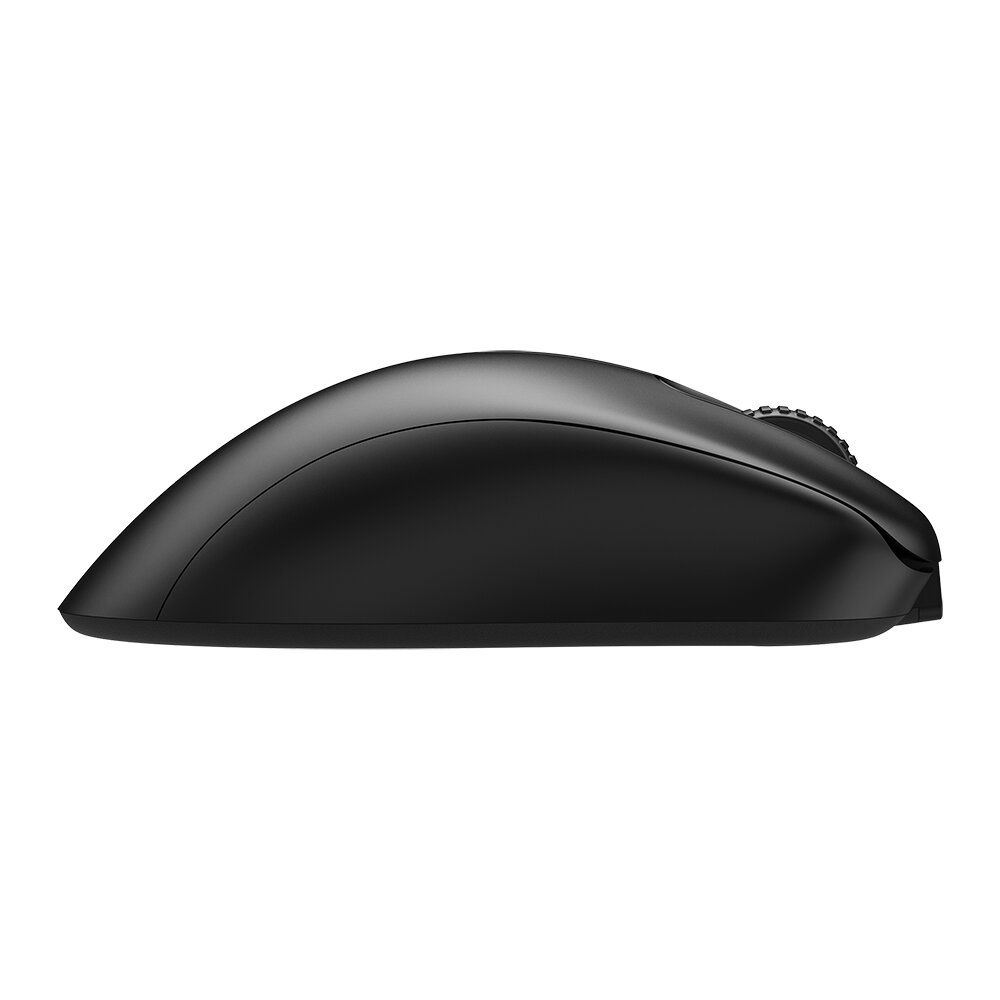 Zowie EC1-CW (Image: Zowie)
Zowie EC1-CW (Image: Zowie)< p class="p text-width">And apart from all that? Well, basically nothing has changed. Zowie hasn't changed the basic shape of the mice. However, there have been changes to the chassis: The two front flanks are raised a little, so that there is more space on the right side for the ring and little fingers to rest on. The key covers are correspondingly less protruding downwards on the sides, although nothing has changed in terms of the actual position and shape. This also means that the left and right mouse button covers are still part of the upper shell, which favors pre-travel. This is no longer the case with Razer's competing DeathAdder since the current V3 variant.
Conclusion and outlook
Speaking of the DeathAdder V3: this is the direct opponent, at least for the large EC1-CW. On the one hand, Razer offers the best sensors in the industry, opto-mechanical keys, an optional USB query rate of 4,000 Hz, at a recommended retail price of 160 euros lower weight and full programmability, whereas Zowie on the other hand primarily wants to score with a USB query rate that is at least theoretically more stable, the iconic EC shape and the best possible processing quality. Zowie still does without software. Nevertheless, the recommended retail price is a proud 190 euros – the EC1-CW, EC2-CW and EC3-CW overtake the Basilisk V3 Pro as the most expensive series-produced gaming mouse from a well-known manufacturer.
And this very fact will presumably be the sticking point. Of course, an EC1-CW with the latest mid-range hardware does not have to perform worse in practice than a competing mouse with high-end internals – mouse sensors have now become so good that the upper and mid-range are no longer really distinguishable in the context of human perception distinguish. But the fact that the new EC-CW models still cost more than the top models of the top dogs is already causing resentment within the mouse community. A price driver will undoubtedly be the Enhanced Receiver, but without it there will be no Zowie wireless mice, at least for the time being, as the manufacturer explained to ComputerBase.
In any case, apart from the price, the first impression is generally positive. In hands-on, the EC1-CW was able to prove itself as a competitive wireless shooter mouse in 2023, with the greatest strengths being those that the input device has inherited: the EC shape knows the palm grip of a large right-hander -Hand is still pleasing and the mouse already made a very high-quality impression as a prototype. Only extensive tests and comparisons can show whether the EC1-CW, EC2-CW and EC3-CW will ultimately be worth the years of waiting for wireless Zowie mice. However, Zowie made it clear to the editors that it would “take a while” before the wireless versions would be available on the German market.
Zowie EC1-CW Glorious PC Gaming Race Model D WirelessPulsar Gaming Gears Xlite V2 WirelessRazer DeathAdder V3 Pro ✔Zowie EC1-CW ✔Zowie EC2-CW ✔Zowie EC3-CW ✔ Zowie EC2-CW Glorious PC Gaming Race Model D WirelessPulsar Gaming Gears Xlite V2 WirelessRazer DeathAdder V3 Pro ✔Zowie EC1-CW ✔Zowie EC2-CW ✔Zowie EC3-CW ✔ Zowie EC3-CW Glorious PC Gaming Race Model D WirelessPulsar Gaming Gears Xlite V2 WirelessRazer DeathAdder V3 Pro ✔Zowie EC1-CW ✔Zowie EC2-CW ✔ Zowie EC3-CW ✔ Razer DeathAdder V3 Pro Glorious PC Gaming Race Model D WirelessPulsar Gaming Gears Xlite V2 WirelessRazer DeathAdder V3 Pro ✔Zowie EC1-CW ✔Zowie EC2-CW ✔Zowie EC3-CW ✔ Ergonomics: Right-hand Sensor: PixArt PAW-3370< br>Optical PixArt PAW-3950
Optical
Lift-Off-Distance: 1.0-3.0 mm Resolution: 400-3,200 CPI
4 levels 50-30,000 CPI
5 levels Speed: 10.2 m/s 19.0 m/s Acceleration: 490 m/s² 686 m/s² USB polling rate: 1,000 Hz Primary button: ? Razer Optical, 90 million Clicks Number of Keys: 7
Top: 3 Bottom: 2
Left Side: 2 6
Top: 3 Bottom: 1
Left Side: 2 Special Keys: Mouse Wheel
cpi switcher Software: – 5 profiles
Fully programmable, secondary assignment
Macro recording
Internal memory: 1 profile Illumination: – Housing: 130 × 69 × 42 mm
Hard plastic
Sliding feet: PTFE base (painted) 123 × 65 × 42 mm
Hard plastic
Sliding feet: PTFE base (painted) 119 × 66 × 41 mm
Hard plastic
Sliding feet: PTFE base (painted) 128 × 68 × 44 mm
hard plastic, coating
Sliding feet: PTFE (pure) Weight: 79 grams (without cable) 77 grams (without cable) 76 grams (without cable) 64 grams (without cable) Connection: USB-C cable
Radio: 2, 4 GHz
Proprietary battery
Charging: Cable, cradle USB-A to USB-C cable, 1.80 m, coiled
Radio: 2.4 GHz, Bluetooth
Proprietary battery, 90 hrs Running time
Charging: Cable Price: €200 from €140
ComputerBase was able to try out a prototype of the wireless EC1-CW as part of an exclusive hands-on event in October 2022 and Get first impressions with a test setup curated by Zowie employees. The manufacturer did not influence the report and there was no obligation to publish it. There was also no NDA – however, Zowie asked the editors not to publish it for the time being. ComputerBase complied with this request.
This article was interesting, helpful or both? The editors are happy about any support from ComputerBase Pro and disabled ad blockers . More about ads on ComputerBase.

